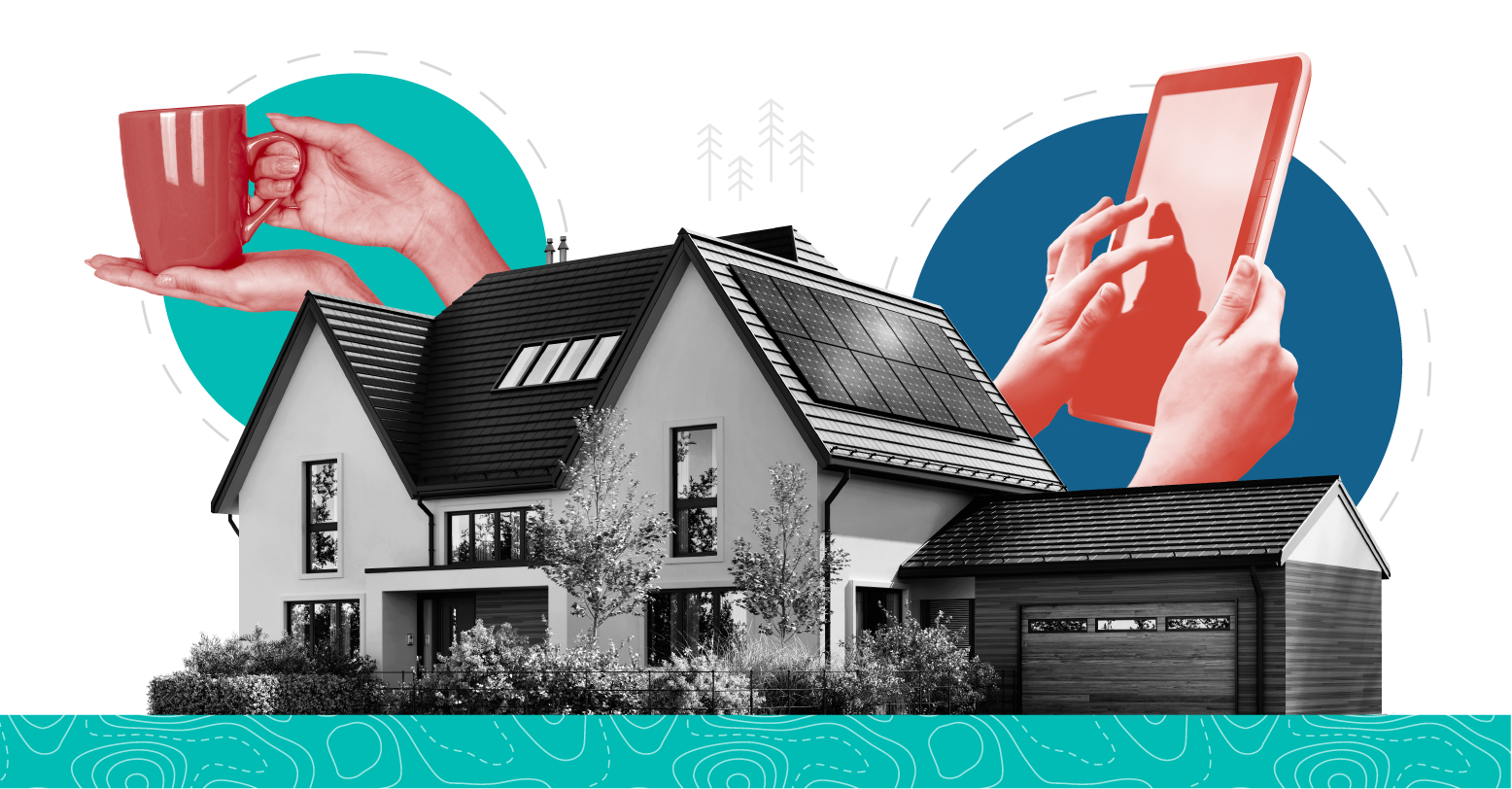
Remote Control: The American Work Scenario

“I bought a house. It’s a two bedroom house, but I think it’s up to me to decide how many bedrooms there are. This bedroom has an oven in it. This bedroom has a lot of people sitting around watching TV.” - Mitch Hedberg
Over the course of the last three years, the well-established boundaries between “home” and “workplace” have blurred. For many people, the lockdown and corresponding work-from-home mandate came as a surprise. Countless office jobs that had intrinsically been linked with location were suddenly untethered from it.
But the result wasn’t unbounded freedom – there was nowhere to go. Instead, bedrooms, spare rooms, and kitchens were repurposed. It was up to us to decide what the office was. The home furniture industry boomed. Who even knew they needed a monitor riser before retrofitting a desk into their spacious walk-in closet?
Introverts had no problem with this shift. Extroverts filled the void of social interaction with a Debordian spectacle of Zoom-meeting-powered Yahtzee nights. The US Bureau of Labor Statistics reported that telework (or work-from-home) “accounted for about 50 percent of paid work hours between April and December 2020, compared with 5 percent before the pandemic.” That number dropped in the subsequent years but is still significantly higher than it was pre-pandemic.
As ethnographic research experts studying cultural trends, this massive shift brought the opportunity for groundbreaking new research. It’s cultural anthropology in its purest form. In addition to the custom research programs we conduct to help businesses solve complex problems, we initiated our own study. Our focus? How Americans spend their time indoors and outdoors. Our methodology included a large nationwide survey and a series of in-depth interviews across the country.
Here are some of our findings, related specifically to the topic of remote and hybrid work.
“I’m a bit of a digital nomad myself.”
It’s all about silver linings. There were numerous positive innovations driven by the pandemic. Tech platforms adapted, shopping evolved, and our collective capacity for binge-watching grew by leaps and bounds. Our research shows that 57% of Americans agree remote work is one of the best outcomes of the pandemic. Only 14% disagree. And let’s be real: remote work shares mutual benefits between employees and employers. Employees save commute time and increase flexibility. Employers save on overhead costs, and often report increased productivity. Almost half of employed American adults can now work from home at least some of the time; prior to the pandemic, this number stood at merely 30%.
Zoom? Teams? Meet? All three at the same time!
There are many intangible benefits to working in a room with peers. One of them is being able to turn your head slightly and ask a question. This connective immediacy can’t easily be replaced, but chat apps like Slack help bridge the gap. For longer discussions, interactions where facial expressions are integral, or meetings where visuals are required, the holy trinity of meeting platforms has been critical. Our study showed that over the past 3 years, online meetings, conferences, and webinars constituted the #1 online activity.
Rihanna said, “Shut up and Drive,” and America said, “OK.”
In the 2022 article “Cars Still Dominate the American Commute,” the World Economic Forum notes that 76% of Americans drive their own car between work and home. That’s a lot of traffic that was and is, greatly impacted by the ability to NOT drive to work. Think of the gas money. Think of the traffic accidents. Think of the time spent waiting for lights to change and people to merge (it’s not that hard!) In our study, 44% of American adults surveyed said they now enjoy more free time as a result of losing (or lessening) their commute.
The reclaimed time is one piece of a larger picture. How that time is spent is whole picture. Unsurprisingly, Americans working remotely are pleased with their reclaimed time. Those who say they’ve exchanged a commute for more free time are twice as likely to say their physical health has improved since the pandemic began and more than twice as likely to say the same about their mental health.
Managing the mixed uses and mixed meanings of our homes.
Homes have transformed into more than homes – they’re offices, studios, playgrounds, and gyms. These new meanings of what personal spaces are and do can transform what once was an oasis of rest into a space we need to escape. Reimagining what our indoors can do is not just about more square footage but providing physical and mental separation of spaces to create dynamism.
These shifts reflect only 3 years of change. But they represent broader questions around how our society moves forward. Here are a few of those questions:
- What does the future of home design look like?
- How can we leverage the need for multifunctional spaces to create a home that supports our personal, professional, and outdoor needs?
- How can we help individuals separate these spheres of their lives within a single space?
- With many of us spending more time indoors at home — has this made it easier or harder to connect meaningfully with our spouses, families, or roommates?
- How might we need to redesign our interiors to support both purposeful solitude and social bonding?
- And when a single dwelling simply can’t contain all these distinct uses, can we look to larger building, neighborhood, and commercial design to support periods of both privacy and togetherness, of active doing and passive relaxation?
- Can we creatively supplement denser and smaller living spaces (where both our youngest and oldest adults are more likely to live) with communal or private areas to meet their needs for heads down work, learning, and sanctuary?
This is but one facet of our exclusive in-depth report, Americans: Inside & Out. Want more details on society’s evolving relationship with television, the Metaverse, gardening, telehealth, and the plethora of ways Americans spend their time? This PDF is free, and it’s for you.
